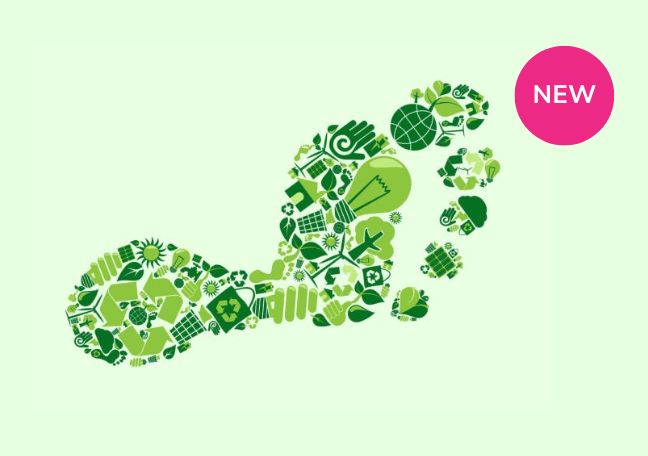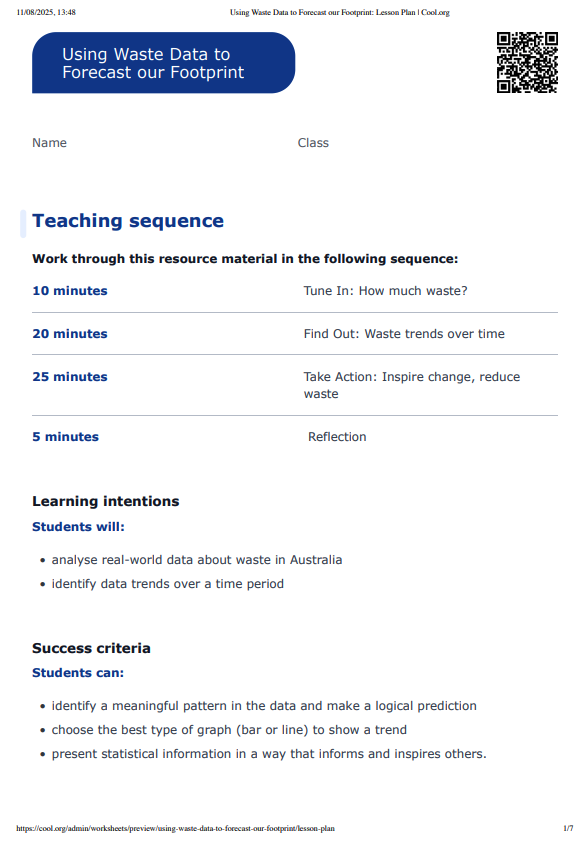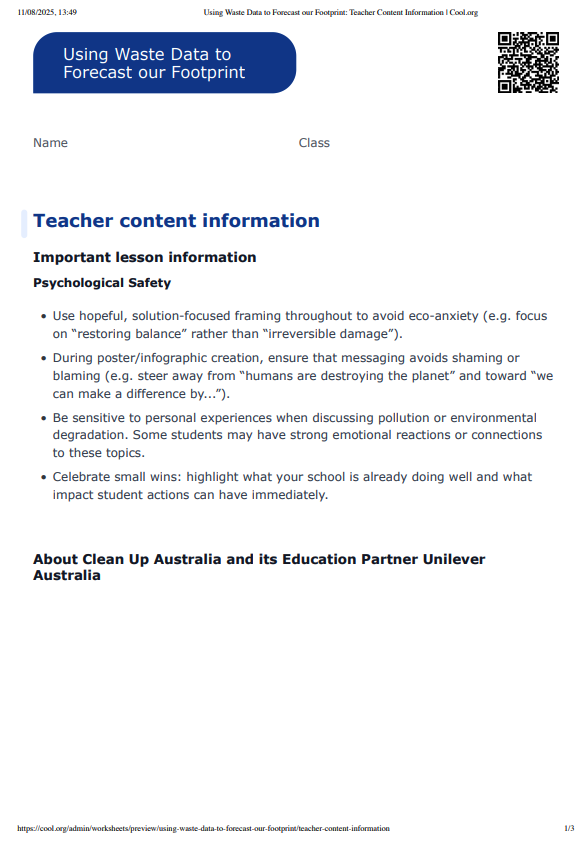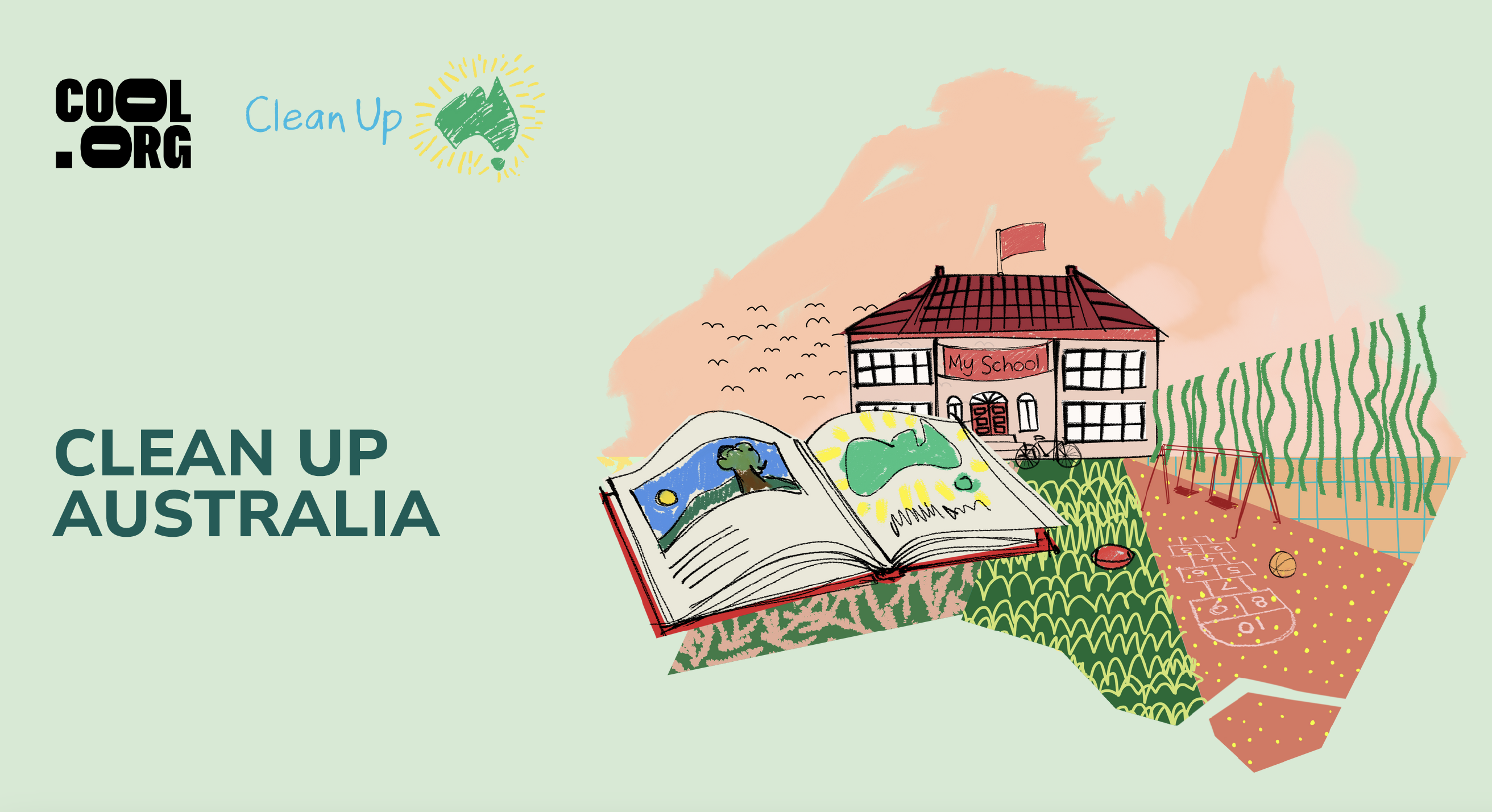Lesson summary
In this lesson, students explore real waste data from Clean Up Australia to uncover patterns and track how our waste habits have changed over time. They will analyse data from different years, then use graphs to represent it. From there, students choose a message they want to share and design an infographic to inform and inspire change in their school community. Whether it’s reducing soft plastic or encouraging cleaner public spaces, students use their data to back up their message and call others to action. Along the way, they’ll build data literacy skills and grow their confidence in using stats to drive real-world change.
These resources are part of the Clean Up Australia Education Resources created in collaboration with Clean Up Australia.
Learning intentions
Students will:
- analyse real-world data about waste in Australia
- identify trends over a time period.
Success criteria
Students can:
- identify a meaningful pattern in the data and make a logical prediction
- choose the best type of graph to show a trend over time
- present statistical information in a way that informs and inspires others.
Lesson guides and printables
Curriculum links
Select your curriculum from the options below.
Lesson details
Skills
This lesson is designed to build students’ competencies in the following skills:
- critical thinking
- communication
- community engagement
- digital literacy
- ethical understanding
- initiative
- global citizenship
UN Sustainable Development Goals
UN SDG 12: Ensure sustainable consumption and production patterns
- Target 12.5: By 2030, substantially reduce waste generation through prevention, reduction, recycling and reuse.
Curriculum Mapping
Australian Curriculum (v9.0) content description:
Year 7, Mathematics
Students learn to:
- create different types of numerical data displays including stem-and-leaf plots using software where appropriate; describe and compare the distribution of data, commenting on the shape, centre and spread including outliers and determining the range, median, mean and mode (AC9M7ST02)
Relevant parts of Year 7 achievement standards: They plan and conduct statistical investigations involving discrete and continuous numerical data, using appropriate displays. They also interpret data in terms of the shape of distribution and summary statistics, identifying possible outliers. They decide which measure of central tendency is most suitable and explain their reasoning.
NSW Syllabus outcomes:
A student
- analyses simple datasets using measures of centre, range and shape of the data (MA4-DAT-C-02)
- classifies and displays data using a variety of graphical representations (MA4-DAT-C-01)
General capabilities: Critical and Creative Thinking, Digital Literacy, Literacy, Numeracy
Cross-curriculum priority: Sustainability
Level of teacher scaffolding: Medium – facilitate class discussion and support students in creating graphs and interpreting data.
Resources Required
- Device capable of displaying visual material
- Individual student devices
- Student Worksheet
- Visual Explainer
Additional Info
Following this lesson plan is an ideal way for your school to take part in Schools Clean Up Day or an Every Day Clean Up. You’ll be joining thousands of amazing teachers in making a difference and creating positive environmental change. For more information on how you can get involved, download The Clean Up Australia Educator's Guide here.
Related Professional Learning
Students, Schools and Eco-Anxiety: Teaching and Learning for Eco-Optimism
Quick Summary: This course unpacks global findings, focusing on eco-anxiety and how to tackle it. You’ll explore practical strategies and real-world examples that shift students from eco-anxiety to action.
It pairs perfectly with our lesson on waste and data, equipping you to help students turn concern into confidence and stats into change.





Welcome back!
Don't have an account yet?
Log in with:
Create your free Cool.org account.
Many of our resources are free, with an option to upgrade to Cool+ for premium content.
Already have an account?
Sign up with:
By signing up you accept Cool.org's Terms and Conditions(Opens in new tab) and Privacy Policy(Opens in new tab).